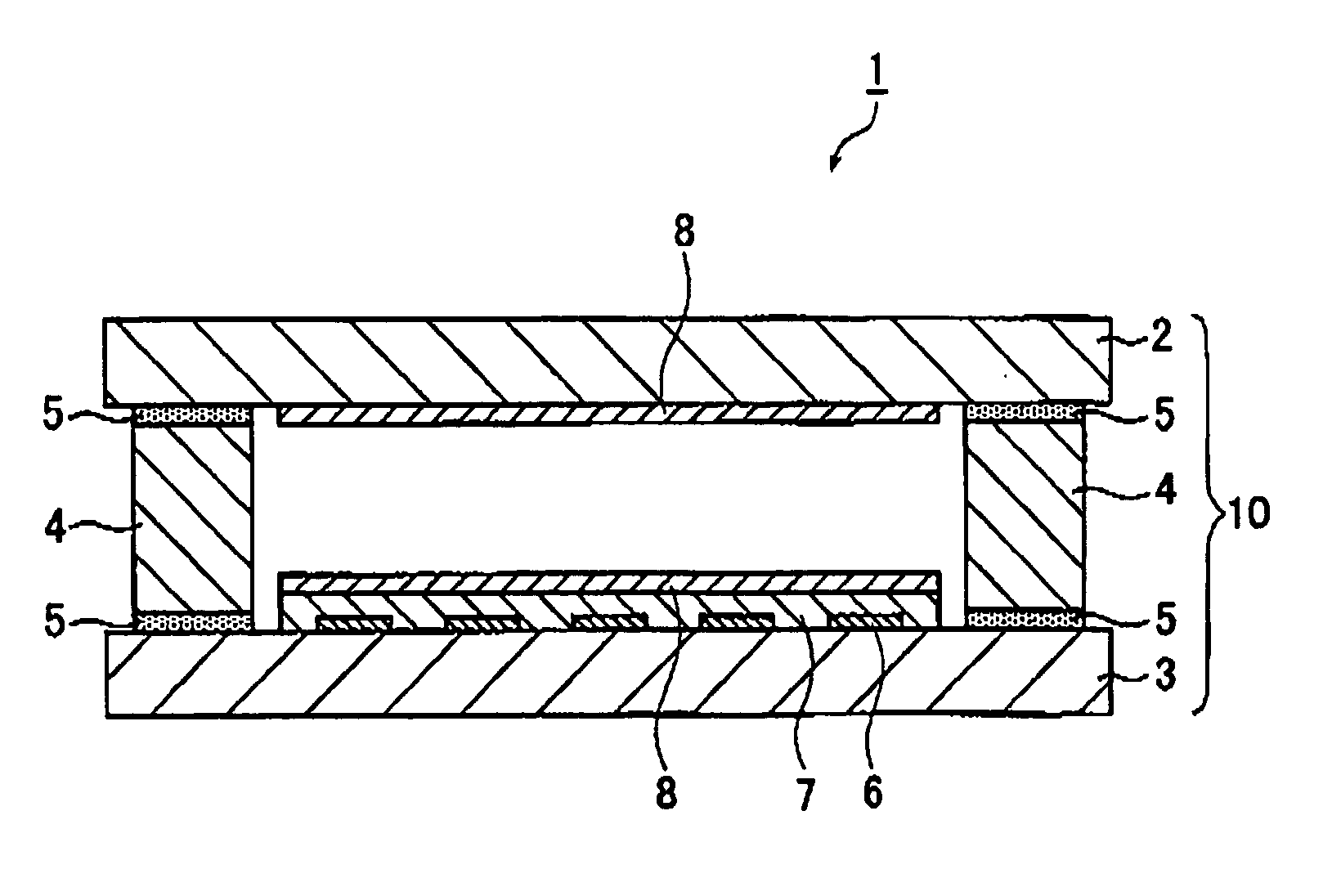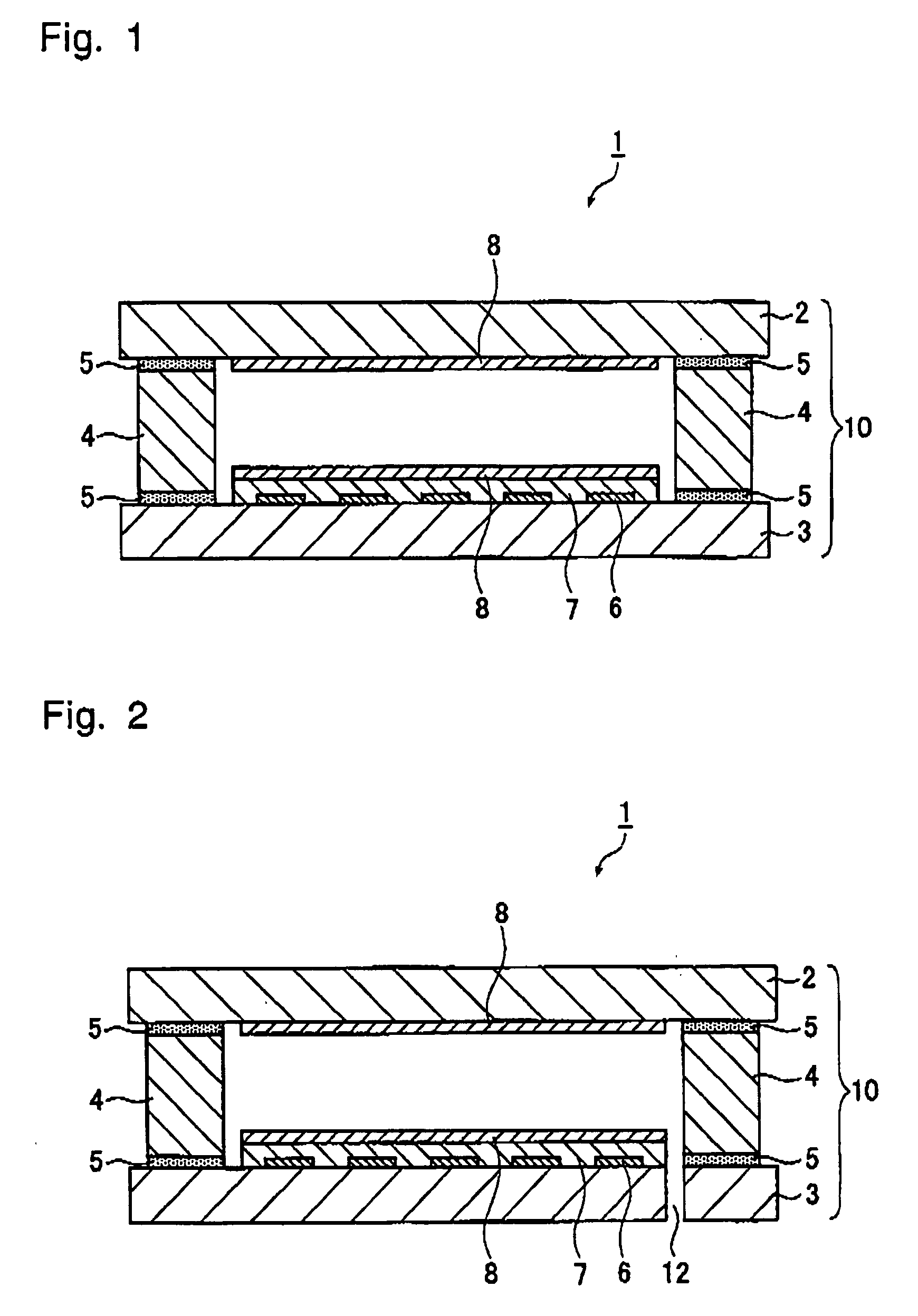Light-emitting device and process for its production
a technology of light-emitting devices and production processes, which is applied in the manufacture of electric discharge tubes/lamps, discharge tubes luminescnet screens, other chemical processes, etc., can solve the problems of high energy consumption, long operation time, and low white color of flat fluorescent screens which are airtightly sealed by means of low melting point glass. , to achieve the effect of reducing energy consumption or the operation time, saving energy and cos
- Summary
- Abstract
- Description
- Claims
- Application Information
AI Technical Summary
Benefits of technology
Problems solved by technology
Method used
Image
Examples
example 1
[0098] Into a container equipped with a stirrer, 40 parts by mass (mass excluding the solvent) of a varnish containing a curable methylphenyl silicone resin having the characteristics shown in Table 1 [molar ratio of bifunctional silicon units (=bifunctional silicon units / (sum of bifunctional silicon units and trifunctional silicon unit)), mols of phenyl groups / mols of methyl groups], and 60 parts by mass of spherical silica having an average particle diameter of 3 μm, were put, heated to from 120 to 140° C. and stirred to remove the solvent. Then, the mixture was stepwisely heated to from 150 to 180° C., and the curable methylphenyl silicone resin was partially polymerized until the viscosity of the composition at 180° C. became 20,000 cp. For the measurement of the viscosity, B-type viscometer was used.
[0099] Then, the obtained solid-form sealing composition and a solvent (ethyl acetate) were mixed in a ratio shown in Table 1 to obtain a paste-form sealing composition.
[0100] In ...
example 2
[0125] A sealing composition was prepared in the same manner as in Example 1 except that a spherical filler having an average particle diameter of 1 μm was used, and evaluation of the obtained sealing composition was carried out. The results are shown in Table 1.
example 3
[0126] Evaluation was carried out by using a sealing composition prepared in the same manner as in Example 1 except that evaluation of properties of the light-emitting device was not carried out. However, in Example 3, the sealing composition was partially polymerized in the same manner as in Example 1 and then molded into a desired shape by casting into a mold made of a fluororesin, and the sealing composition was used in the form of the molded product.
PUM
| Property | Measurement | Unit |
|---|---|---|
| Length | aaaaa | aaaaa |
| Percent by mass | aaaaa | aaaaa |
| Particle diameter | aaaaa | aaaaa |
Abstract
Description
Claims
Application Information
 Login to View More
Login to View More - Generate Ideas
- Intellectual Property
- Life Sciences
- Materials
- Tech Scout
- Unparalleled Data Quality
- Higher Quality Content
- 60% Fewer Hallucinations
Browse by: Latest US Patents, China's latest patents, Technical Efficacy Thesaurus, Application Domain, Technology Topic, Popular Technical Reports.
© 2025 PatSnap. All rights reserved.Legal|Privacy policy|Modern Slavery Act Transparency Statement|Sitemap|About US| Contact US: help@patsnap.com



